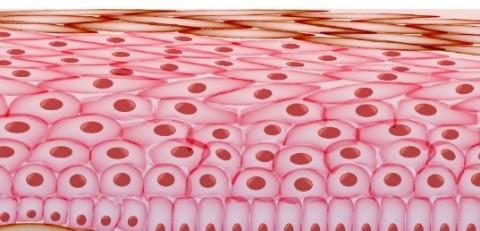
Skin Cells Emit Slow Electric Pulses After Injury: Study
When our skin gets injured, it’s a natural response to feel a stinging or burning sensation. This discomfort is often accompanied by a series of events that help our body heal from the wound. One of the most fascinating aspects of this healing process is the role of electrical signals. Researchers have long known that our nervous system plays a crucial role in transmitting electrical impulses to aid in healing. However, a recent study has shed new light on the unexpected discovery that skin cells themselves emit slow electric pulses after injury.
Published in the Proceedings of the National Academy of Sciences (PNAS), the study reveals that human skin cells produce slow electric pulses in response to injury. These signals are unlike the rapid nerve impulses we’re familiar with, instead traveling at a much slower pace. But what’s remarkable is that these electrical waves can be detected up to 500 micrometers away, opening up new avenues for understanding the intricate communication networks within our skin.
The research team, led by Dr. Michael Levin, a professor of biology and bioengineering at Tufts University, used a combination of experimental and computational approaches to investigate the phenomenon. They used a laser to create tiny wounds on the skin of mice, and then monitored the electrical activity of the surrounding cells using electrodes.
What they found was astonishing: the skin cells nearest to the wound began emitting slow electric pulses, which spread to neighboring cells and even further away. These pulses were detected at a frequency of around 0.1-1 Hz, which is much slower than the rapid nerve impulses that typically range from 1-100 Hz.
So, what’s the purpose of these slow electric pulses? The researchers believe that they may play a crucial role in helping injured cells’ neighbors prepare to heal wounds. Essentially, these electrical signals act as a warning system, alerting nearby cells to the injury and triggering a response that helps to clear the area of dead cells and promote tissue repair.
One of the most exciting implications of this discovery is the potential for developing new treatments for skin wounds. Currently, wound healing is a complex and often slow process, with many wounds taking weeks or even months to heal. By harnessing the power of these slow electric pulses, researchers may be able to develop new therapies that accelerate the healing process.
For example, the study suggests that electrical stimulation of the skin could be used to enhance wound healing. This could involve using small electrodes to deliver electrical pulses to the affected area, mimicking the natural signals produced by the skin cells themselves. This approach could potentially be used to treat a range of skin conditions, from minor cuts and scrapes to more severe wounds and chronic ulcers.
Another potential application of this research is in the development of new diagnostic tools. By monitoring the electrical activity of skin cells, researchers may be able to detect early signs of injury or disease, allowing for earlier intervention and better treatment outcomes.
While this study has shed new light on the fascinating world of skin cell communication, there is still much to be learned. The researchers acknowledge that further studies are needed to fully understand the mechanisms underlying these slow electric pulses and their role in wound healing.
Despite these limitations, the findings of this study have significant implications for our understanding of skin biology and wound healing. As researchers continue to unravel the mysteries of skin cell communication, we may be on the cusp of a revolution in wound care and skin health.
Sources:






